Leaning against a brick garden wall warmed by the autumn sun, I pondered whether this ancient building material has a place in contemporary garden design. Is it a relic of traditional gardens? Brick has been a favorite material for gardens for centuries, from Roman courtyards and Tudor knot garden paths to the walls surrounding Victorian vegetable gardens. Winston Churchill, the British wartime prime minister, found brick laying to be a form of relaxation and built an extensive wall at his Chartwell garden.
Brick, which has been with us in one form or another since humans first started building, is most often formed from kneaded clay, molded into its familiar shape and then fired at a high temperature. Today, with garden designers embracing other construction materials, is there a place for brick in the garden? I think there is, and I’m sure that when you’ve had a look at some examples of great contemporary garden design using brick, you’ll agree.
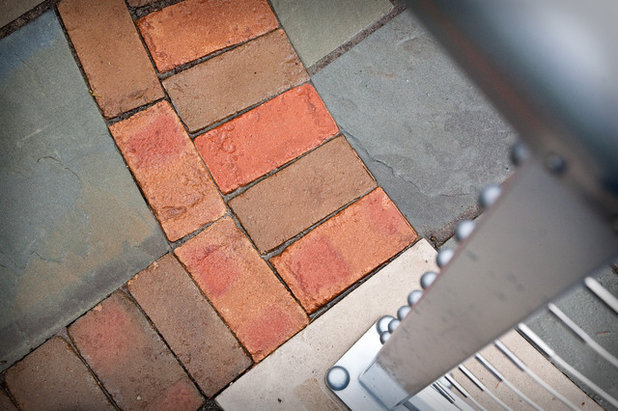
Ginkgo Leaf Studio
You may ask yourself what the advantages to using brick are. Bricks can be heavy, you’ll need a lot of them to cover much square footage or build walls, and it requires some skill to lay or build with them. On the other hand, the color does not wash out or fade but tends to improve as the material ages; bricks are also flexible, able to create complex shapes and can help blend house and garden.
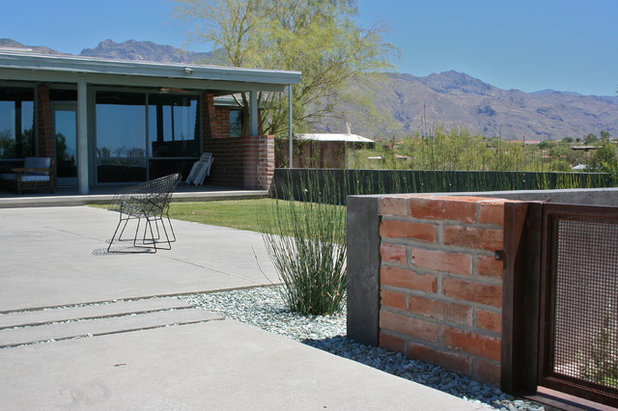
Prideaux Design
This Southwest garden uses brick in a traditional manner, linking the landscape to the house. The perimeter wall’s brickwork detail leads the eye from the landscape to the brick house and creates a cohesive design.
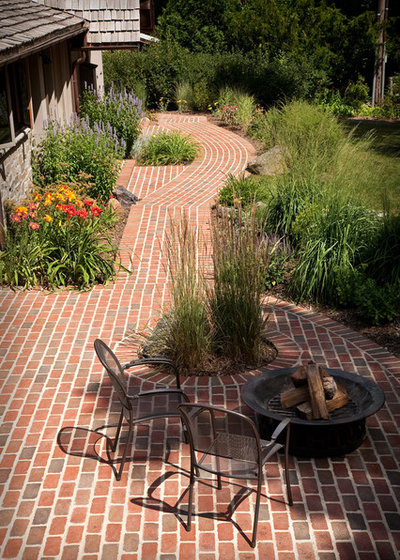
Ginkgo Leaf Studio
Linking the garden to the house through brick has been turned on its head in this garden. The vivid brick paving and almost exaggerated light mortar create a path that’s tied to the house but also create interest where the paving deviates.

The clean lines of this yard’s path, wall and steps show how brick can be used in a modern formal garden. The pathway features the traditional basket-weave pattern, and the wall is finished with a brick coping rather than stone or precast concrete. The lawn, perimeter planting and row of clipped boxwood (
Buxus sp) balls balance the terra-cotta color of the brickwork so that it doesn’t overpower the design.
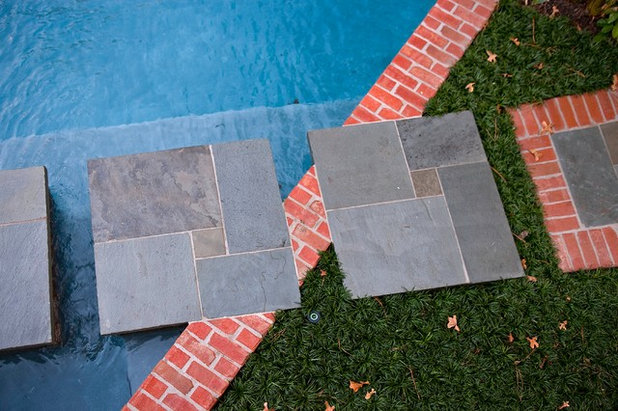
Exterior Worlds Landscaping & Design
Like an artist mixes materials in a collage, designers mix and match hardscape materials to create, in some cases, patterns in the landscape. Brickwork is a perfect way to make lines and blocks in an abstract garden design. Bricks traditionally were made from local clay, but today there is a wide range of colors, textures and styles of bricks to choose from.
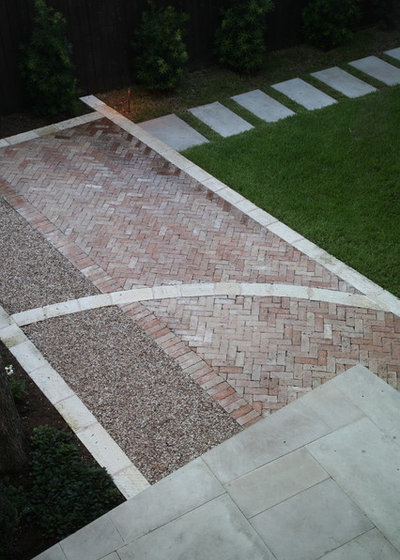
Hugh Jefferson Randolph Architects
Here architect Hugh Randolph used the landscape as his canvas to create a practical yet visually pleasing contemporary patio with bricks. The bricks are laid in a traditional herringbone pattern that pays homage to the house’s traditional construction and also gives the patio a sense of directional movement.
Renovation Detail: 4 Popular Brick Patterns for Patios
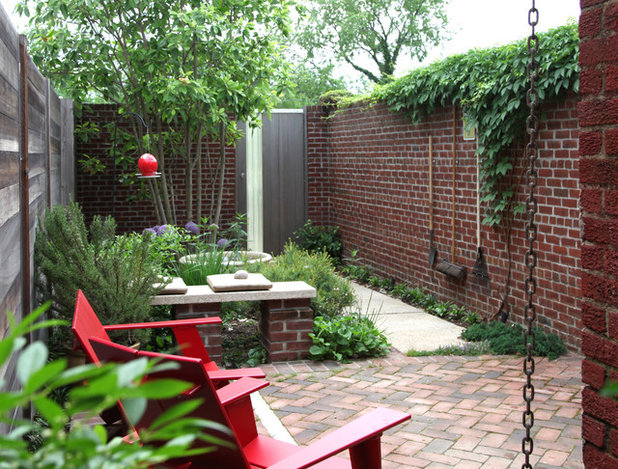
Moody Graham
Even in compact modern gardens, we see how easily brick can link with other materials to form a contemporary structure. The herringbone-patterned patio here sits under a tall brick wall that both provides privacy and reduces surrounding noises. The gate at the end of the garden matches the wood side fence and adjacent brick wall, giving the design cohesion. Concrete pavers form the pathway from the brick terrace to the rear gate, and the two materials join in the bench.
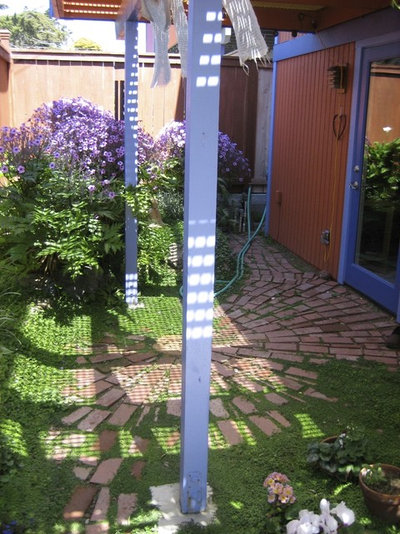
Jeffrey Gordon Smith Landscape Architecture
The meandering brickwork of this eclectic garden seems to lead us through the garden, while its subtle tones blend with the creeping ground cover; in places the brick even becomes one with it.
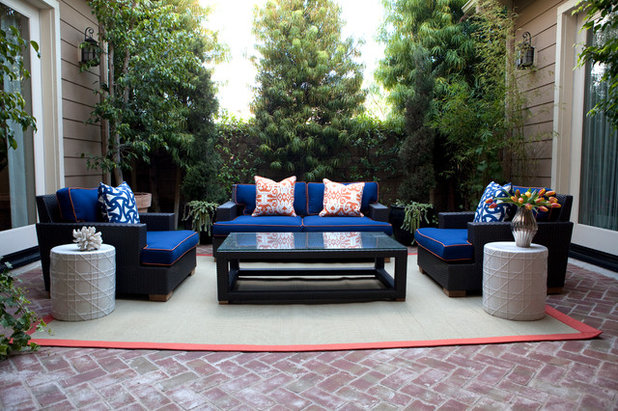
Emily Ruddo
Furnishing exterior spaces as outdoor rooms has become an interesting design choice. The brick paving here almost replicates parquet flooring, reinforced by the use of the expansive rug. In a small space like this, the use of brick could feel busy, but here it’s successful, creating a cozy yet organized feel.
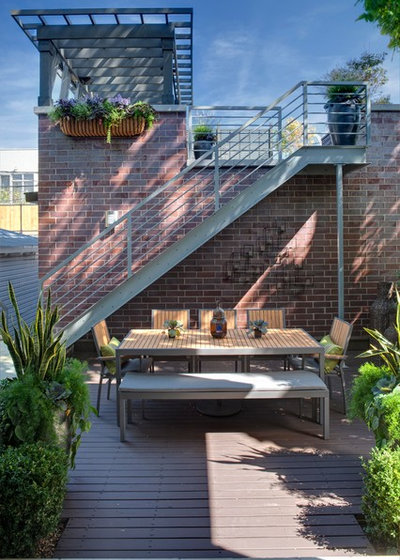
Nicholas Design Collaborative
Brick is used for an accent wall in this outdoor room. Though here the brick is part of the building’s structure, it has not been covered with climbing plants or disguised in any way. The beauty of the material is celebrated, with the brick as a backdrop to outdoor dining. We can see how well the wall combines with the wood decking and steel staircase.
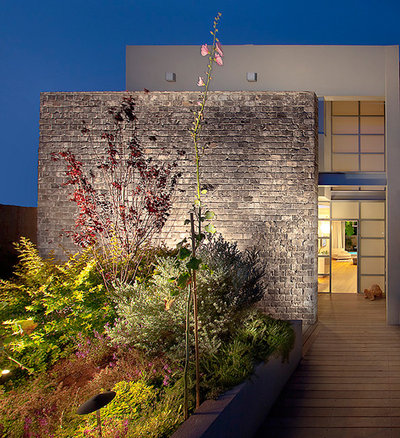
Elad Gonen
Here a square of brick creates a privacy screen for an entrance. In addition, the brick adds to the landscape and provides a textured, neutral backdrop for the architectural planting in front and the shadows the plants cast.
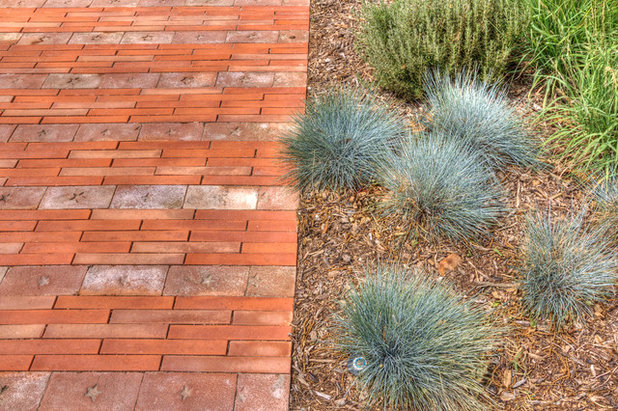
Wintersole Architecture
Simple patterns can add interesting detail to basic paths. Here longer-than-normal bricks have been laid in a stretcher bond pattern in blocks, separated by a row of standard-size bricks embossed with a star — simple but very effective.
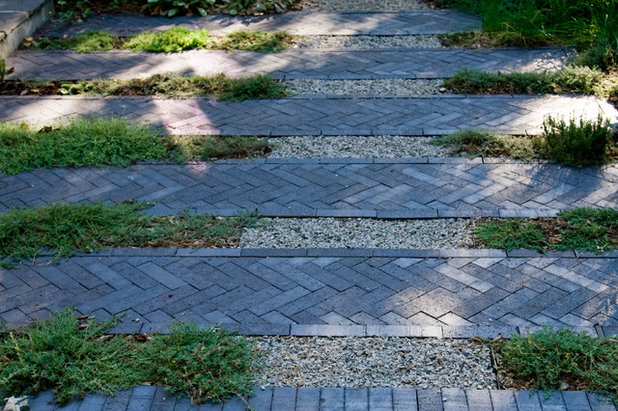
Matthew Cunningham Landscape Design LLC
Bricks can provide detail through a different color. The blue bricks used here, known as Staffordshire Blue bricks in the U.K., have been fired at a higher temperature than normal bricks, making them hard and impervious to water and perfect for paths and steps.
Here beautifully detailed blocks of herringbone-patterned blue bricks, held within a stretcher border of bricks, cross a gravel pathway interspersed with plantings of low-growing flowering thyme. The boldness of these repeated solid blue blocks is softened by this simple planting.
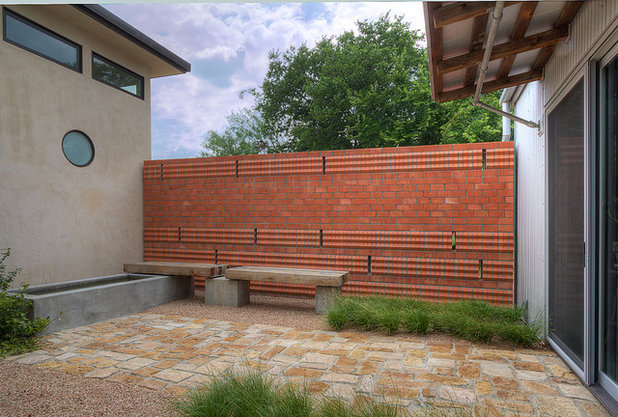
Wintersole Architecture
The clever pattern on this beautifully constructed wall breaks down the mass of bricks and prevents it from overpowering the brick courtyard it encloses.
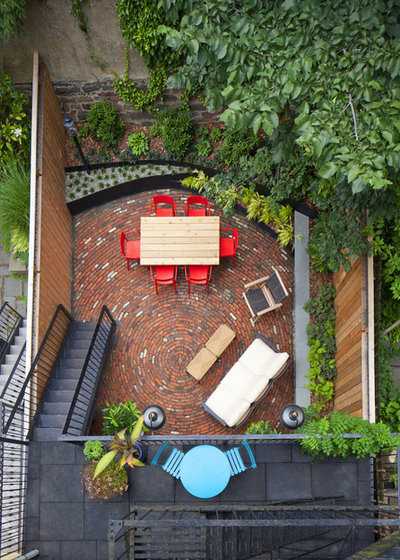
New Eco Landscapes
This stunning vortex of bricks almost envelops this small and very contemporary urban garden in Brooklyn, New York. The brick provides the benefits of a permeable surface and an amazing pattern when viewed from the seating area above.
See more photos of this garden
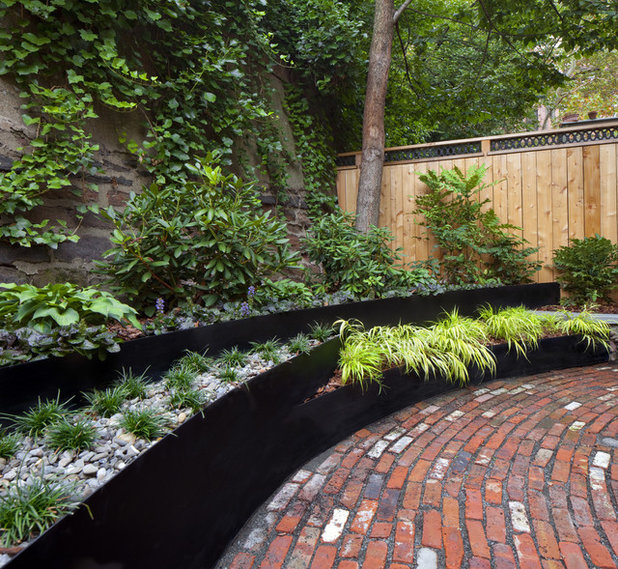
New Eco Landscapes
When we take a closer look at the design, we can see how brick’s being a modular material allowed the designer to create such an intricate pattern. Reclaimed bricks bring interesting textures and a mixture of colors to the garden, allowing them to be seamlessly integrated with other materials.
More: Brick, a Heavyweight for Modern Exteriors
Tell us: Does your contemporary garden include brick? Share your pictures in the Comments section below.





